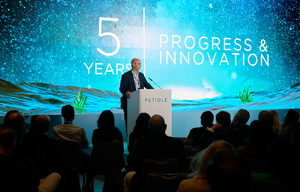Daniel Brueesch will make the cooperation work even more smoothly in future. Raiffeisen has created a new unit called investment solutions and products, which will be mainly fed with Vontobel’s offering. And Brueesch, a former Vontobel managing director, will run this unit.
So, with Raiffeisen’s investment business led by a former Vontobel man, it is a tad ironic, that the private bank would gain the most from the Raiffeisen crisis.
When the cooperation started back in 2004, the signs had been to the contrary: the retail bank had bought 12.5 percent of Vontobel and Vincenz had planned to increase the stake to about 30 percent. Banking experts were certain that Vontobel one day would be taking over by Raiffeisen.
Not so. Vincenz widened his bank’s web of stakes and diversified Raiffeisen’s interests – to the detriment of the cooperation with Vontobel, which had proven fruitful.
From Crisis to Fruition
Vontobel Chairman Herbert Scheidt went to an arbitration tribunal to decide whether Raiffeisen’s investment in Leonteq and the acquisition of Notenstein had violated the cooperation agreement between the two banks. In 2014, the relation looked to have reached rock-bottom and Vontobel bought the shares back from Raiffeisen.
When Vincenz left as CEO however, the tide turned again. Gisel, the new CEO, went back to Vontobel to get help with his problems with Vescore. Vontobel CEO Zeno Staub sensed a good deal and renewed the cooperation with Raiffeisen through the acquisition of Vescore.

A Decisive CEO – in Zurich
Against some expert voices in the financial market, Staub has shown to be a decisive CEO, who pounced on opportunities when they arose, making Vontobel one of the strongest banks in the market at the present moment.
And as such, he can be seen as the direct opposite to Vincenz, whose killer instinct and dashing strategy brought a huge crisis upon his bank.
- << Back
- Page 3 of 3




































